We left Kingston and drove north along the Coorong, a chain of lagoons which stretches 190km from the mouth of the Murray River at Goolwa to Kingston. We heard on the news that night that the sand dunes are eroding at a rate of 3.5m per year, putting the lagoons in danger of being overtaken by sand.
We opted to travel via Adelaide rather than face the steep, rocky road that skirts the Adelaide Hills again, and had a much easier drive down the freeway from Tailem Bend, despite the white-knuckle steep descent. A ring road took us around the CBD to join the freeway going north.
After nights spent at Tailem Bend and Owen we crossed the top of Yorke Peninsula to Wallaroo. We stayed in a caravan park right on the ocean at North Beach, in the midst of very expensive-looking houses set on canals, many with boats moored at their back doors.

Copper was discovered in the area in 1861 when a shepherd found traces in a wombat’s burrow on the pastoral lease granted to Walter Watson Hughes. Hughes established a smelting works near the natural deep harbour at Wallaroo, and ore from mines at Kadina and Moonta was also smelted there from 1861 until the works closed in 1923. The works employed a large number of Welsh smelter men and it eventually became the largest smelter in the southern hemisphere. The square chimney stack was built by Welsh stonemasons, as opposed to the round chimney at Moonta built by Cornish stonemasons, and carries the inscription ‘WWH 1861’, commemorating the founder of the company. It stands 130ft high and contains over 300,000 bricks.

We walked the heritage trail around Wallaroo, taking in many old stone buildings including the Town Hall, opened in 1902. It was almost totally destroyed by fire but restored in 1918 with the addition of the clock tower. The granite boulders in a striking sculpture represent the three towns of the Copper Triangle, with drill holes representing the wooden supports within copper mines, and the copper headframe representing the mining and smelting structures.

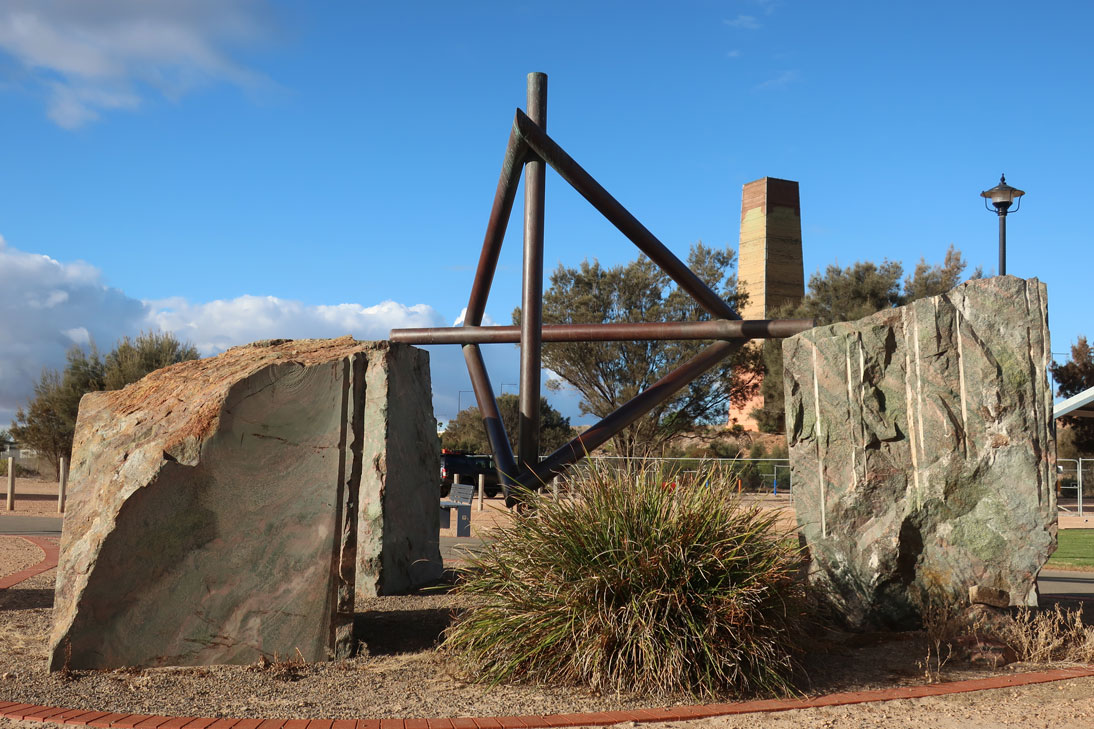
Kadina is the biggest of the Copper Triangle towns, and again we walked around some of the historic buildings, including the Town Hall which was erected in 1880. The hall and second storey council chambers were added in 1883, and in 1903 the clock tower was added. Across the road is the 1908 SA Savings Bank building which mixes Art Nouveau, Gothic, Tudor and Classical styles of architecture. The old railway water tower mural features a young maypole girl, signifying the Cornish history of the area.

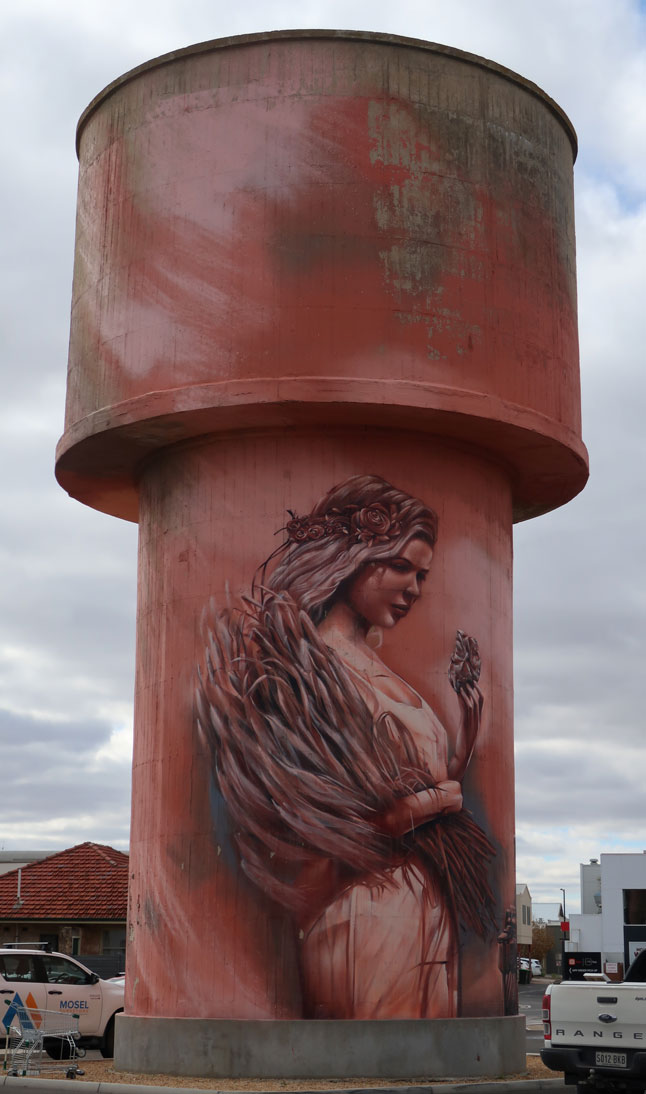
At the lonely Greens Plains West cemetery we found the grave of Julie’s great great grandparents Augustus Frederick and Maria Skipworth, who died in 1881 and 1891 respectively. Nearby is a plaque which marks the first wheat crop grown on the Yorke Peninsula by A.F. Skipworth in 1865.


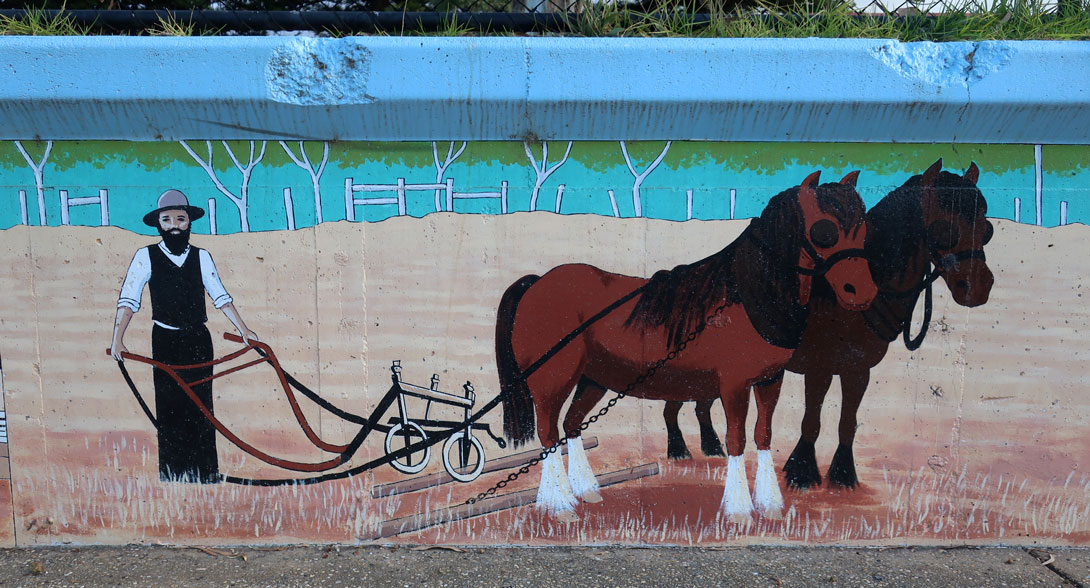
Moonta Mines has extensive mining relics including Hughes Engine House – one of three in the area – erected in 1865, and Richmans Engine House, which dates from 1869. The very grand Moonta Mines School was built in 1887, and Moonta Mines Methodist Church was consecrated in 1865. We treated ourselves to fudge and rocky road from the tiny sweet shop which was doing a roaring trade, despite everything around being closed.
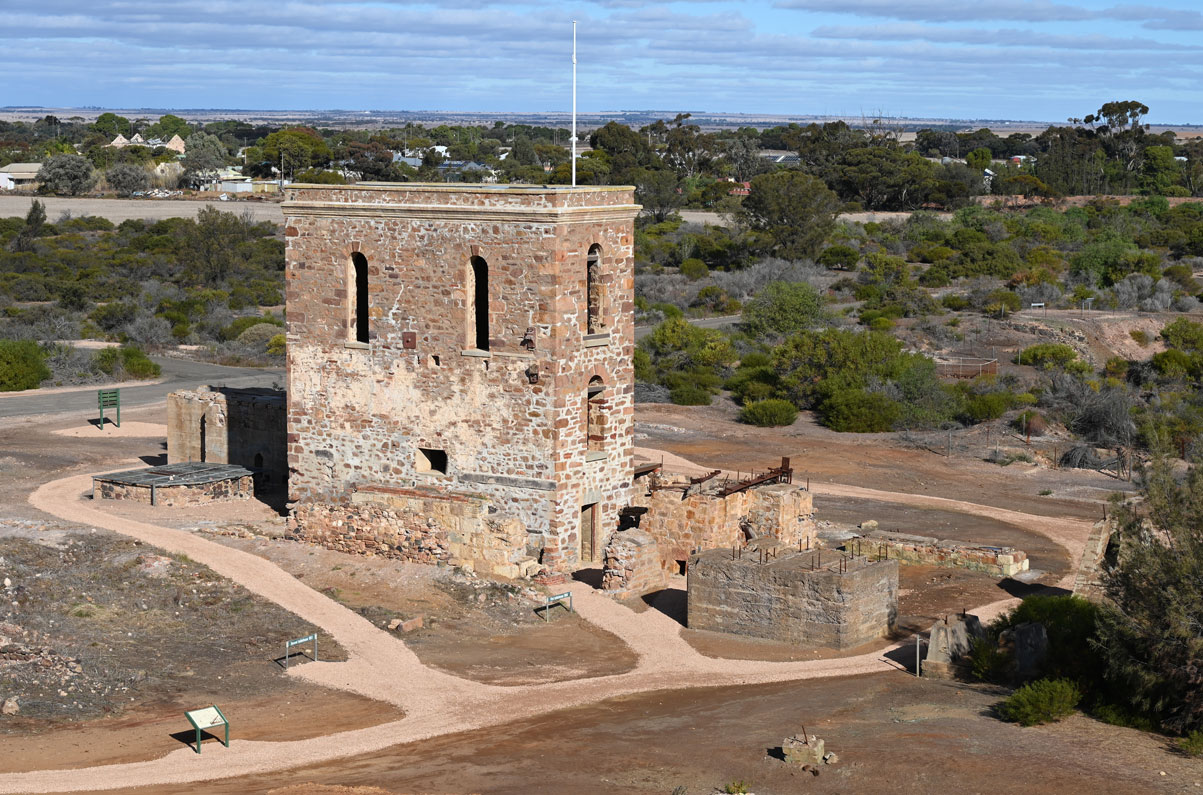
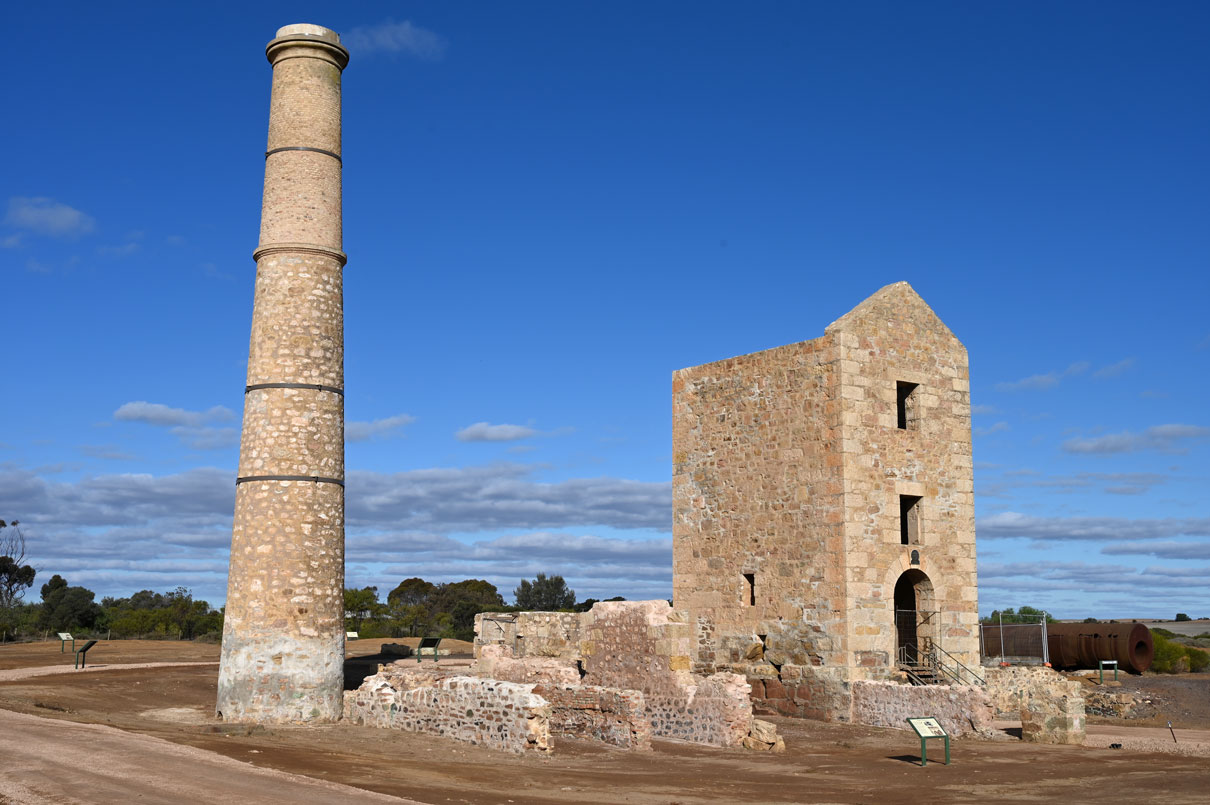
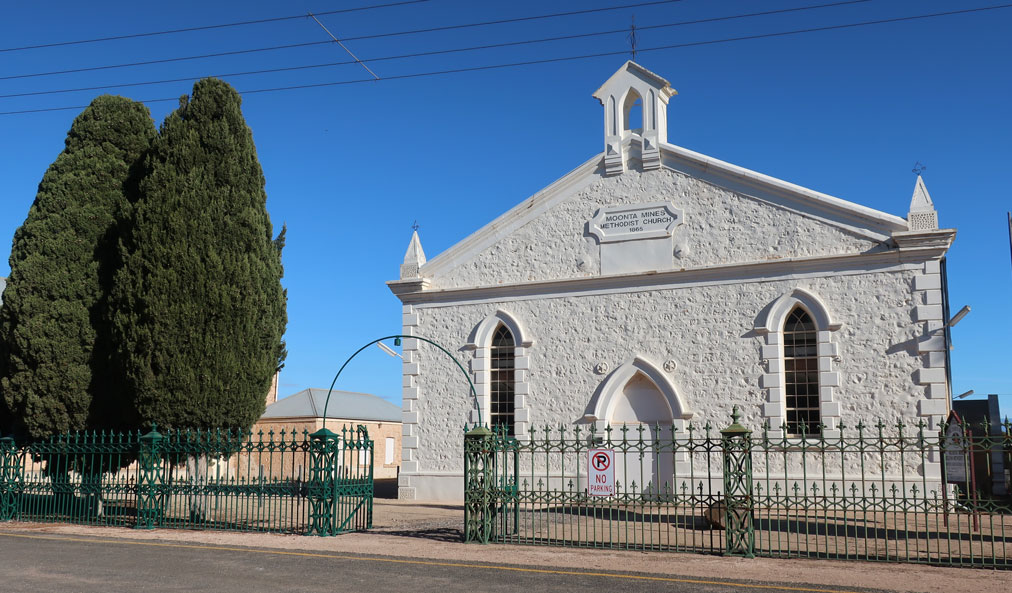
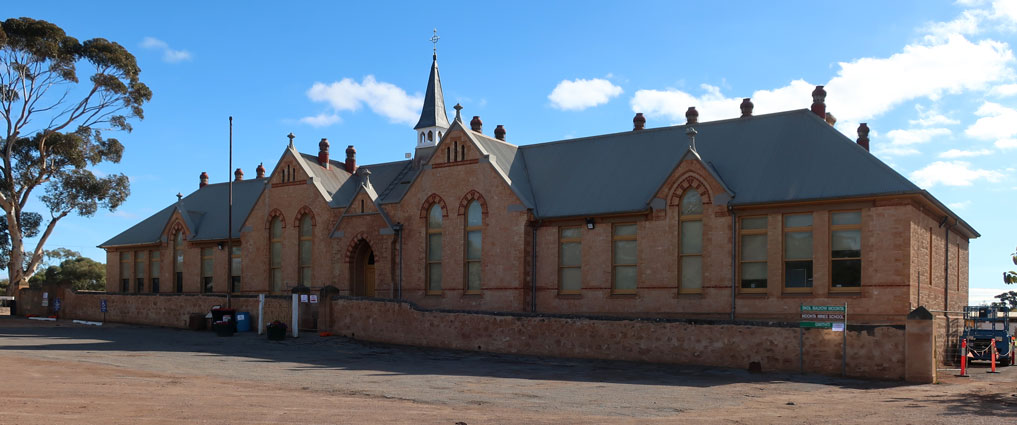
Moonta Town Hall is another striking building, erected in 1885 with the clock tower added in 1907. The Gothic-style Methodist Church was built in 1873 and faces Queen Square, established in 1897 and named in honour of Queen Victoria. The statues of a pair of wombats highlight the role they played in the discovery of copper in the area. Also in the gardens is a statue of Air Marshall Sir Richard Williams who was born in Moonta and is considered the ‘Father of the RAAF’. He had an illustrious career in the RAAF and is regarded as the most significant figure in its history.

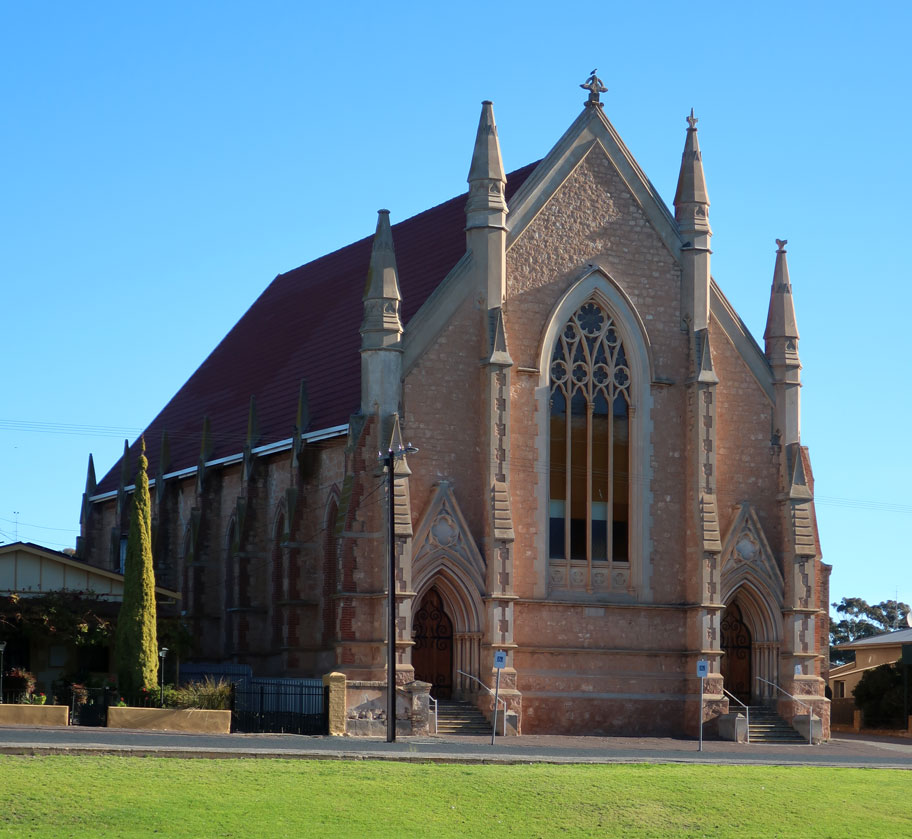


Oh my a night on the canals looks lovely indeed. I just love the art you are finding along the way…looks wonderful xx
LikeLike
We enjoyed the area, its art and history. And the family connection makes it very special.
LikeLike